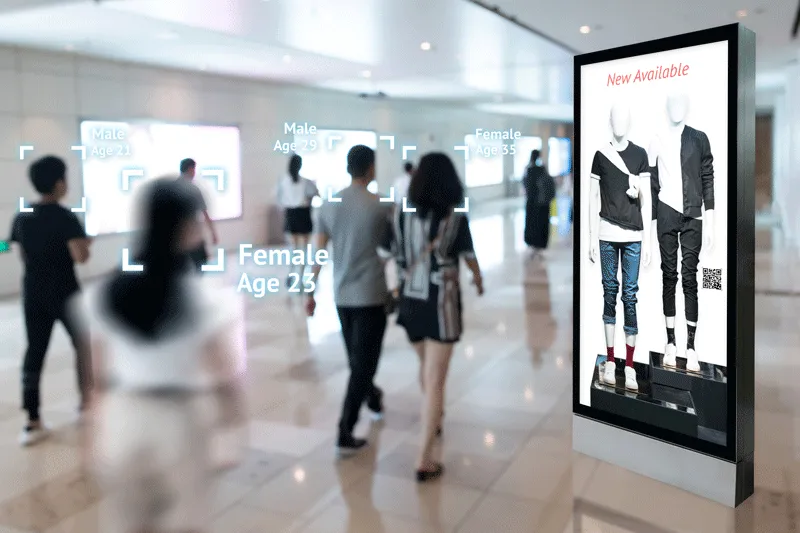Digital marketing allows a company to collect data on buying habits, dropped carts, viewed pages…. This data is then analyzed in order to learn more about the visitors and to offer them products that will inspire them to make a purchase. This technique has grown greatly during the 2010s and is now a real data analysis machine for e-merchants.
What about those who sell their products directly in their stores?

Digital marketing has indeed taken a prominent place online, but recently, it is slowly being implemented on our sales shelves. Therefore, some stores are focusing on using a digital marketing strategy to create omnichannel points of sale. Indeed, the interaction between the e-commerce site and the physical stores is inevitable as the consumer is now ultra-connected. They are no longer satisfied with browsing the shelves in a store, they are online all the time, on any medium, they do not compartmentalize their shopping places or their search for information…
The connected store becomes a place of shopping experience where merchandising and digitalization of the shopping path are integrated in a cross-channel strategy.
To succeed in its digital transformation, it is essential that a store understands the customer journey. It’s not enough to place tablets or connected media everywhere in the store but to clearly define the most strategic areas.
From there, the interaction with the consumer can begin. A connected store is above all a place of service before being a place of sale, the objective is to have support allowing the presentation of information on the products or additional services.
The existing tools are now legion, I will present two of them that should arrive in our stores quickly if it is not already the case.
Smart shelving
One of the first advantages of connected shelving systems is that they allow you to know in real-time how much product you have in stock and to quickly plan a supply to avoid shortages that lead to a loss of profit. It also allows you to quickly know which products are working and which are not, and to define locations according to customer needs. Moreover, by retrieving historical data throughout the year, you can know when and in which part of the store a product sells best.
Another point, it is possible to connect a shelf to an interactive screen on which product information is pushed. This information will then be broadcast in a targeted way by displaying appropriate messages or cross-selling information when a product is removed. The shopper now has all the information on your products, on products of the same family, or on other ranges.
Facial recognition
It is not easy to know the behavior of a consumer and to know what attracts him. With the help of a camera equipped with facial recognition software, it will be able to recognize the gender, age, or time spent in front of a shelf and define a product that will appeal to the consumer.
The goal of these two tools is to provide an even more advanced customer experience that allows the merchant to know more about the buying habits of his customers and how to increase his sales. However, pushing data in the form of “GIFs” or product sheets onto interactive terminals can only be done if the product data is complete and structured. This is where J2S’ ability to push content dynamically comes in. Once the information is correctly transmitted, the data will be usable and constantly updated so that you no longer have to worry about whether your displayed content is accurate. I invite you to read our previous article to learn more about data management and how Simple Workspace can help you create and distribute your product sheet.
Did you find the article interesting? Please get in touch with us.

B. Chauvel
Sales manager











